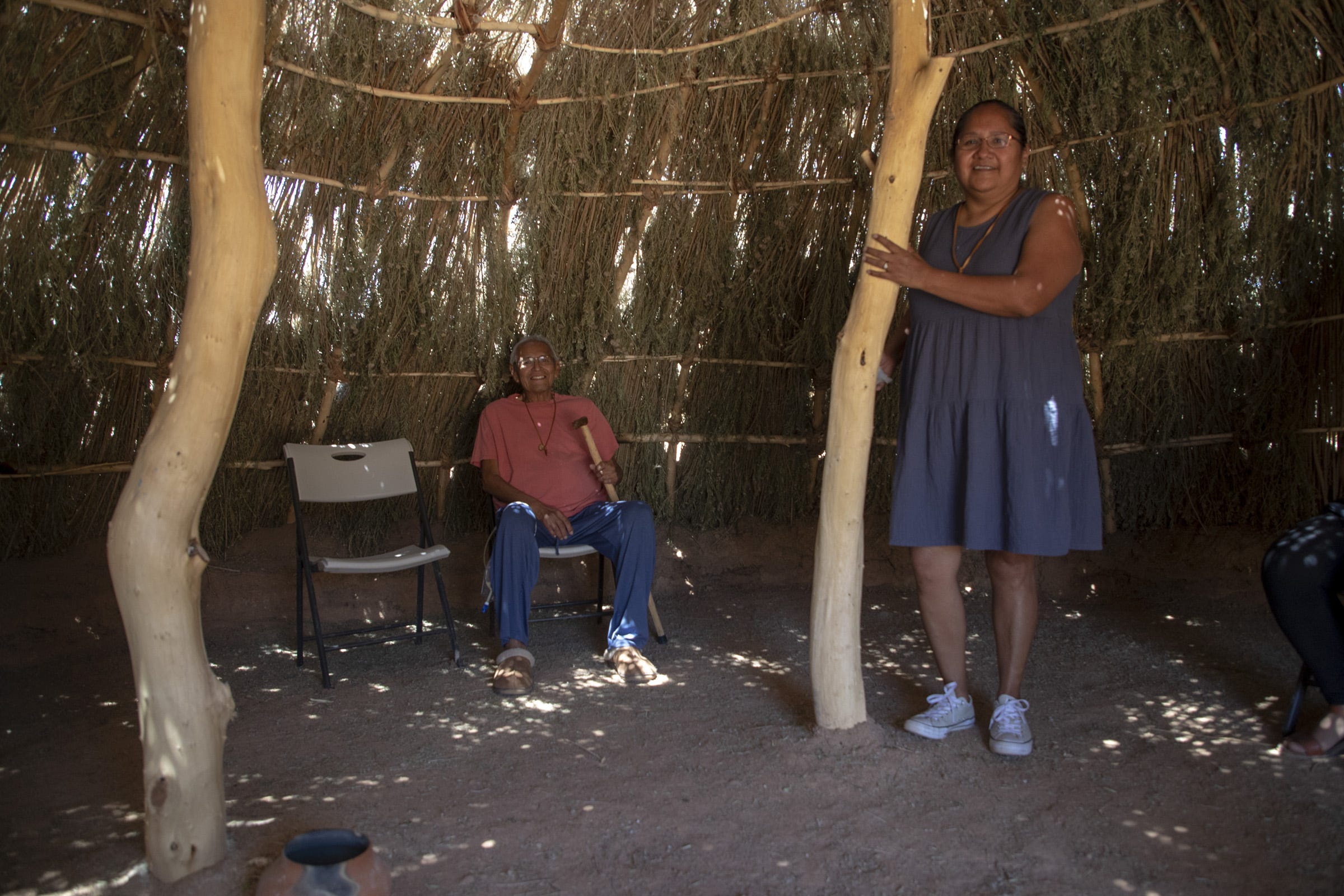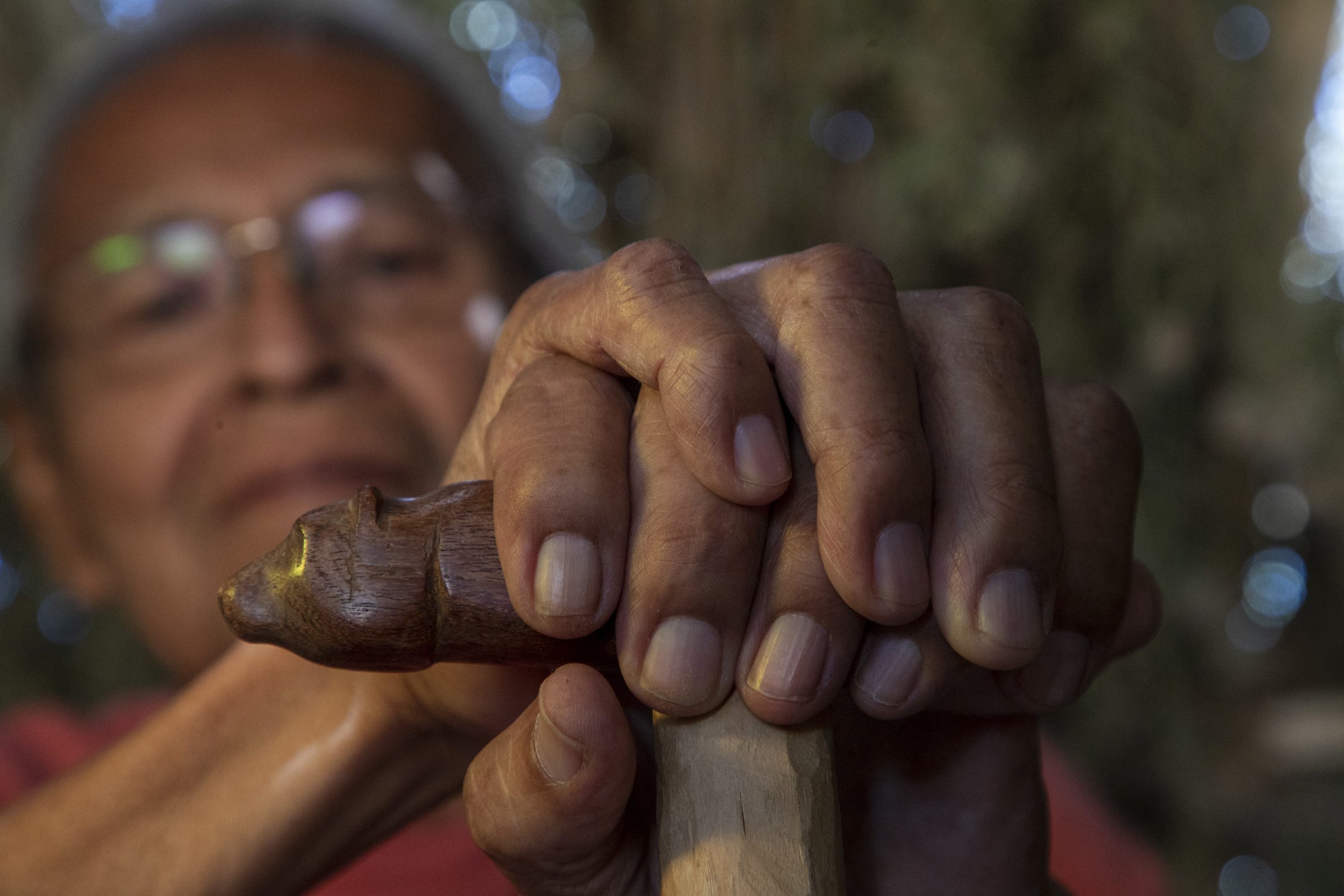
Nick Oza/The Republic
Since Royce Manuel’s hair started going white, he’s noticed more people turning to him for traditional knowledge about his community.
Manuel, 68, grew up on the Salt River Pima-Maricopa Indian Community and has always been a keeper of such knowledge, so he’s happily shared his teachings.
Much of his knowledge comes from his father and grandparents, who were constantly sharing stories and teaching him new things about their culture and traditions. One of those was the story behind the making of a Kia-ha, a burden basket.
Manuel heard about the basket growing up and always meant to learn how to make one. It wasn’t until he was much older and had a daughter of his own that he decided the time was right to add to his knowledge.
He would spend years perfecting the art, following a path toward preserving his community’s past and working to better its future.
Manuel’s daughter Marissa was in elementary school at the time and gearing up for the Miss Salt River Pageant. He wanted to give her something traditional to carry.
“I decided to make a burden basket, but I didn’t know how the process of actually using the natural materials,” Manuel said. But that didn’t stop him and he set about making Marissa a basket out of cotton cordage.
Traditionally, a Kia-ha is made from fibers from the agave plant and woven into a basket harnessed by a willow rim and saguaro ribs. The basket sits on the carrier’s back and is held in place by a forehead strap.
Manuel said it’s like a woman’s backpack. The basket was typically used to carry firewood, seed pots and large pottery, and could hold up to 100 pounds.
“It was crazy because a lot of people didn’t know what it was,” Manuel said. “She wore it on stage, and everyone was fascinated by what she did, and they didn’t know what this object was.”
Manuel learned about the burden basket from his grandmother when he was about 14. He recalls how she told him that a burden basket is made by the men in the community and they put a part of themselves into it.
“From that point on, I kept it in the back of my mind that I need to learn how to do this,” he added. “When the opportunity came, that’s where the struggle was, because everybody said they knew how to make it and (then) they don’t know how to make it.”
Manuel said he looked for people who could help, but didn’t find anyone who knew how to make it or how to process the material.
“So I had to rely on old-time stories,” he said. He ended up teaching himself.
Manuel, a citizen of the Salt River Indian Community from the Auk-Mierl Aw-Thum, or Akimel O’odham culture, now specializes in traditional O’odham arts, including bows, arrows, flutes, rattles and baskets, work he’s been doing since he was 12. He uses traditional designs that he has researched throughout his life or that his family taught him.
He currently lives on the Salt River Pima-Maricopa Indian Community east of Phoenix with his wife, Debbie Nez-Manuel, a citizen of the Navajo Nation, and they have a combined family of eight.
For years, Manuel has been sharing his traditional knowledge throughout his community. He recalls how, in the early 2000s, when he was still a firefighter with the Salt River Fire Department, a young man asked him about traditional clothes kids wore in Salt River during the “old times.”
Manuel explained that there is a difference between what can be considered “old times” and the “modern times” with the tribe. So when people ask him for traditional knowledge, he often asks them again what they mean.
He laughed about the young man’s question because, growing up around his grandparents, he was often told that kids would wander around naked in their community due to the heat.
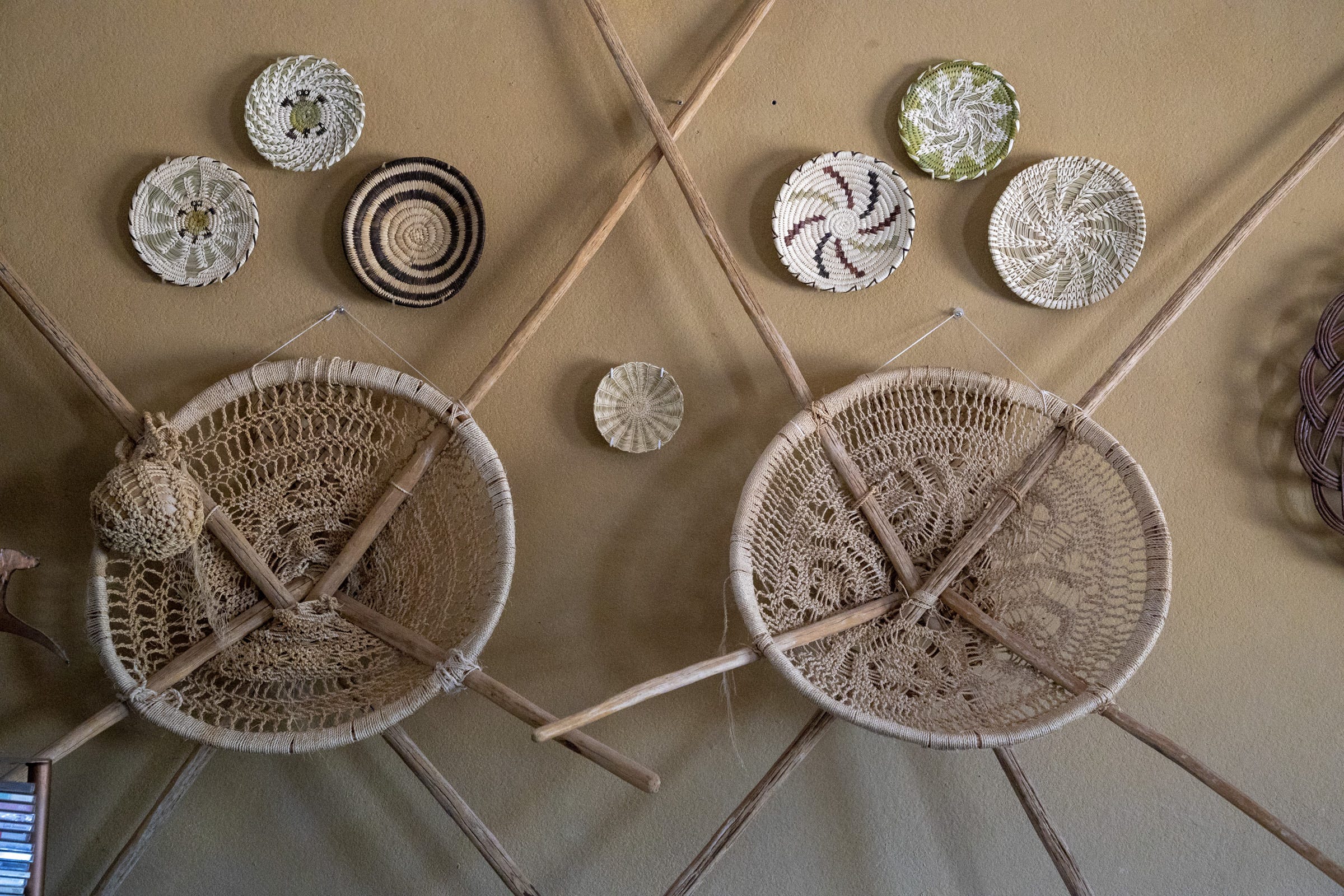
Revitalizing a lost art
At the beginning of his journey into making a burden basket, Manuel practiced with cotton cordage to work on the weaving technique, an important part the process.
He learned the weaving technique from a book called “Basketry of the Papago and Pima Indians,” because it has drawings and diagrams that show the different types of baskets that are made by the tribe. He would also visit local museums to see the baskets on display.
“I was frustrated because I was trying to follow the diagrams as they described it,” Manuel said. He remembers getting so frustrated one time that he had to walk away from the table and his basket.
When he went back to it he noticed that the diagram in the book was upside down and once he turned the book over, he understood where the center part of the basket started and how it should weave.
After that, he color-coded his book so he could see the weave easier and he started getting into designs. Manuel said he practiced weaving the baskets with cotton cordage because he was struggling to use the traditional material.
“(It) took me 15 years to figure out the process of preparing the material,” Manuel said, because it’s made from agave leaves.
Basketmakers use the fibers in the leaves and but there’s an irritant in them, Manuel explained, and the first time he tried it was like working with poison ivy. His hands would grow itchy and irritated.
Manuel said he remembers hearing a story about how his family would gather agave hearts from a natural garden near Tortilla Flats on the east side of Superstition Mountains.
“It's about 45 miles from my house,” Manuel said. “We didn’t have horses, so we’d actually travel on foot all the way to that area to harvest hearts.”
They would dig a big hole and build a fire so the ground would get hot. Then they’d pull all the coals out, put the agave hearts in the hole and cover it with the agave leaves.
Manuel said they’d keep it covered for three days. He remembers how sweet the agave hearts would taste after cooking that long.
“I kept thinking about that story,” he said, and that’s when he decided he was going to try cooking his own agave. His neighbor had some agave plants outside their home, so Manuel cut some leaves off and boiled them three times.
“Sure enough, it worked by boiling it,” He said.
He was able to break down the agave leaves and get the fibers out. Manuel said doing that was a lot better than working with the leaves raw and getting burned by all the toxicity in them.
'It was a long journey'
Manuel didn’t make his first traditional Kia-ha out of agave fibers until about 2009, and he entered it into the Heard Museum Art Show, where he won first place in the traditional basket division.
One of the judges of the exhibit told Manuel he’d never seen anyone make a burden basket before and he’d never been aware that anybody knew how to make one. It was from there that Manuel realized how big of a deal it was for someone to make these baskets.
He began his basketmaking journey without knowing he’d be revitalizing a tradition within his community. He recognized what he'd accomplished when he shared his work during a meeting with the four tribes, Salt River, Gila River, Ak Chin and Tohono O’odham.
Manuel said leaders from the four sister tribes praised him for the work he’d done. One was even brought to tears because they didn’t think they’d see a traditional Kia-ha outside of a museum.
“It was a long journey,” Manuel said, from teaching himself, to finally producing the baskets and then being recognized for his work.
Manuel has spent over a decade researching and documenting desert plant weavings and desert lifeways to ensure that his tribal community and family are aware of these traditional teachings.
When Manuel started to share his teachings publicly, he taught classes, created archives and worked with community members. His work with the burden basket earned him the Spirit of the Heard Museum Award in 2013 for revitalizing this lost art.
“I use personal knowledge and skills to demonstrate with children today how important the 'Tools of Yesterday' are to connecting to our tribal history,” Manuel wrote in his LinkedIn Profile. “My assistance helped enhance growing programs and provided guidance for development, reinforced aspects of tribal identity through symbolism, and provided understanding of tribes for new and growing businesses.”
Manuel received the 2017 Native Arts & Crafts Foundation Mentor Artist Fellowship, and spent the year working with his apprentice Matthew Yatsayte.
Through his fellowship, Manuel taught Yatsayte “the cultural and historical significance, and making of fiber art items by harvesting desert plants that were more commonly used amongst Native tribes of the southwest in the past for survival purposes,” the website states.
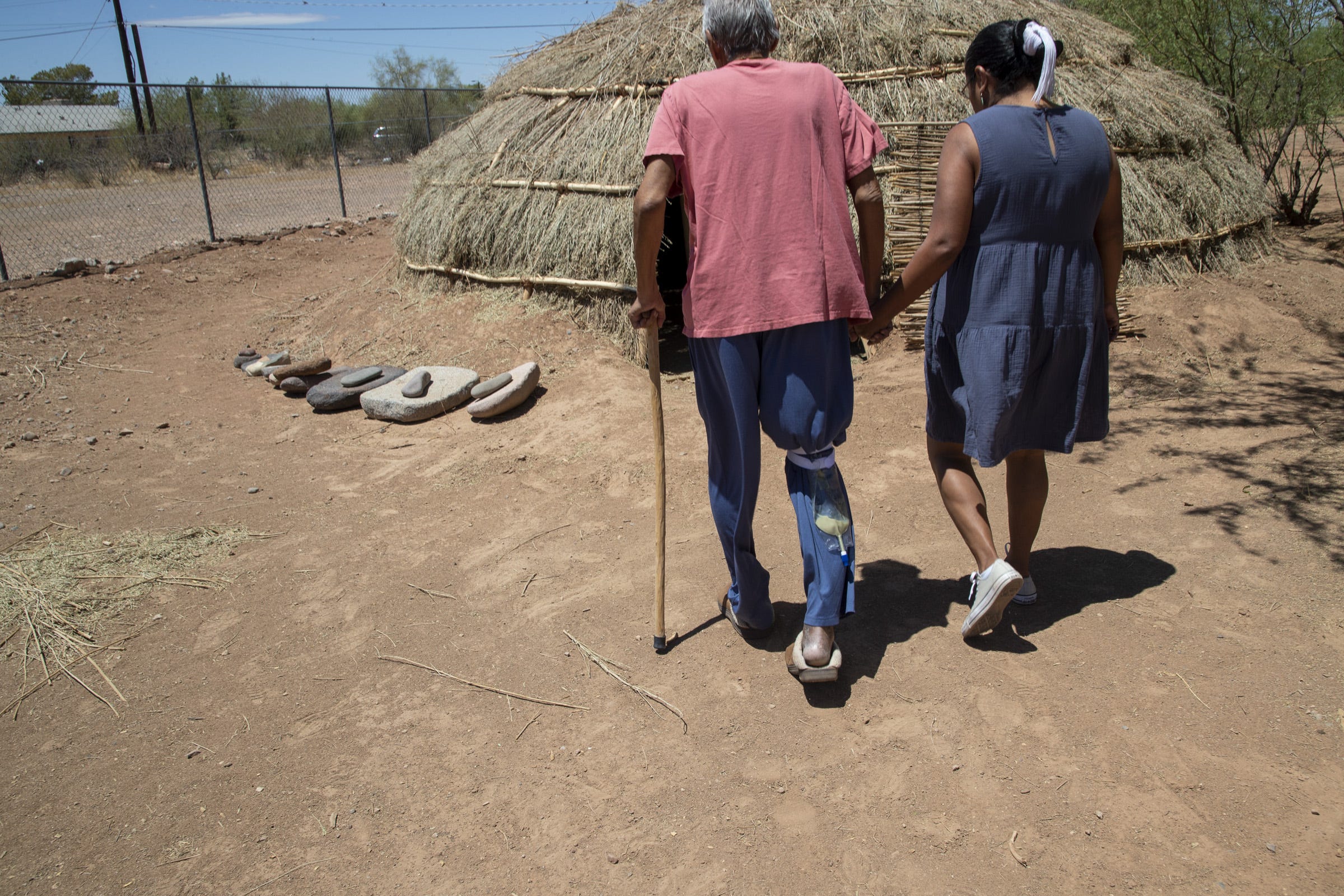
Beginning another journey
Manuel is still sharing his stories, but only when he has the strength. He has been diagnosed with Stage 4 pancreatic cancer and, after undergoing treatments early on in his diagnosis, he chose to spend his remaining time in hospice care.
For most of the year, he was at his home with his family, but in mid-June, he moved into Hospice of the Valley Eckstein Center in Scottsdale.
“While it's difficult to say what the next few days will bring, I know this time is sacred and precious,” Debbie Manuel said in a Facebook post on June 14.
“We are shaken to the core for sure, but I know I have done everything in my being to show and express to him how much he means to us all," she added.
Manuel was diagnosed with cancer on Jan. 28, still at the height of the COVID-19 pandemic. Hospitals weren’t allowing visitors, so his wife wasn’t able to comfort him while he was there.
Manuel said his doctor explained the situation and then said if he didn’t take care of it, his life expectancy had just decreased.
“That phrase stuck in my mind, and I had to really grasp it to understand, you know, that this is a life changer right this moment,” he said. “I was sitting there thinking, man, this is crazy, this is scary.”
He called his wife to let her know what was going on, since she couldn’t be in the hospital with him at the time.
“We cried on the phone kind of knowing that this is a life-changer right here at this moment and that she’s not here,” he said.
Debbie Nez-Manuel said in that moment she felt completely helpless.
“I thought to myself, this is awful. We can't be with the people that we love in the most critical times of their lives,” she said, and she tried to figure out how to get into the hospital.
“I just wanted to hold him and just be there,” she added. “It was just the most hopeless feeling in that moment. But I couldn’t provide comfort to my own husband.”
Manuel went through chemo treatment in February and March. During one of his appointments, he was asked what he thought his life expectancy was. He told them two months. The doctors agreed because the tumors were spreading in his body.
“There’s nothing stopping them at the moment, so that’s where I’m at,” Manuel said. He accepted in-home hospice care, and stopped chemo treatments.
“It’s such an overwhelming process to get through,” Debbie Nez-Manuel said. “It really opened my eyes to something that I never knew.”
The family is allowing visits from family and friends but they limited to three people at a time for 10 to 15 minutes. They ask that people refrain from visiting if they’re feeling ill.
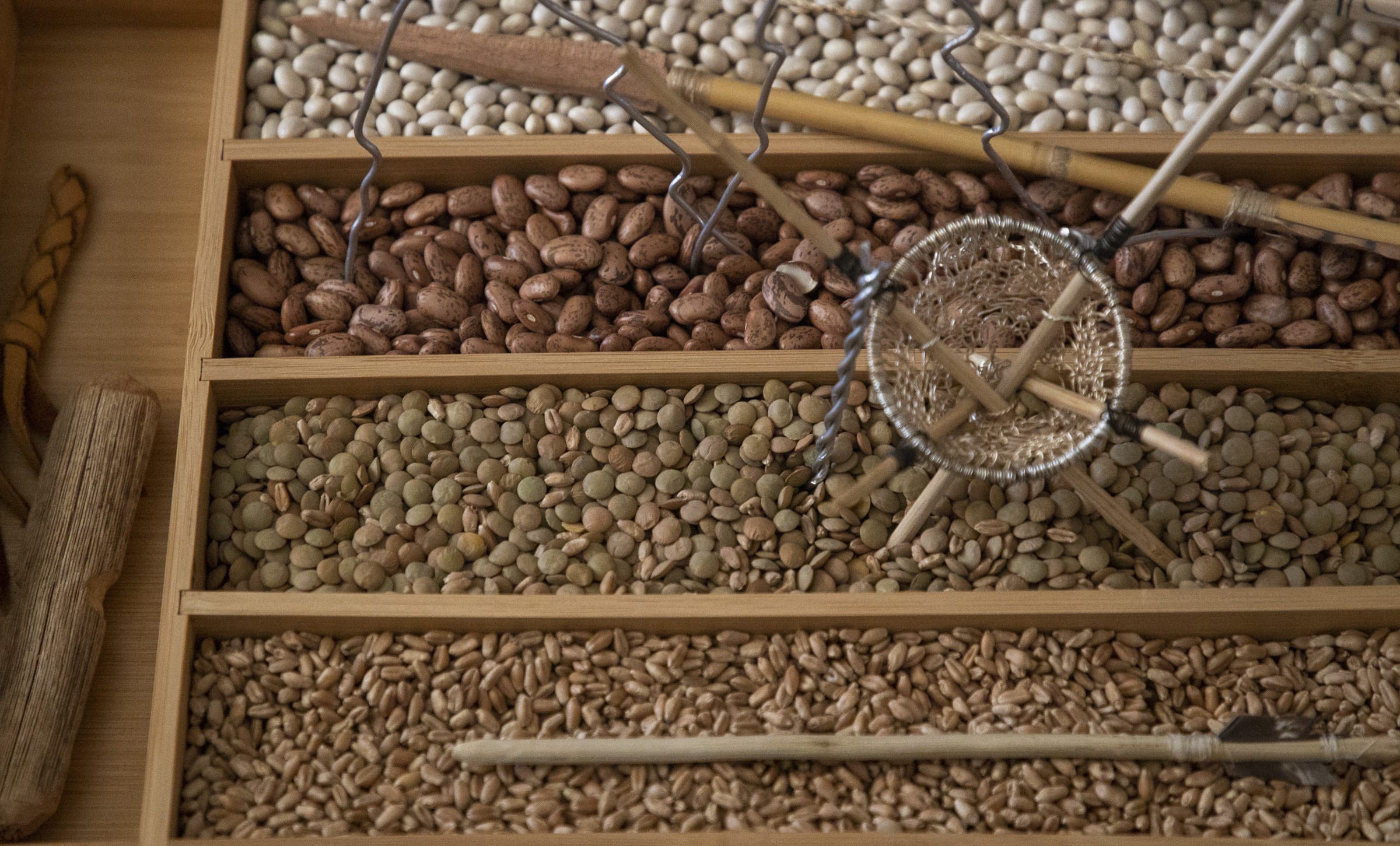
Upholding his community
Manuel has played big roles in his community from the very beginning, working as a major advocate for gaming in the 1990s.
“We started a small grassroots organization to bring gaming to Salt River,’ Manuel said, but it wasn’t accepted at first in the Salt River community.
Through the group, Manuel said they brought more information about gaming to the Salt River Tribal Council, which denied it at first. It wasn’t until the group started a petition for gaming that the council decided to move forward with it.
“The experts they brought in were the same experts we were talking to already,” Manuel said. “We’re the ones that pushed it and got it passed. Now it’s up to council to do what they have to do.”
He pushed gaming within the tribe, he said, because he knew it was going to be big. At the time, Manuel said 60% of the community’s income was coming from the landfill.
“That’s no way to run a community, just relying on people’s garbage,” he said.
He ended up on the casino board for about six years after gaming finally came to Salt River.
“The decisions that we made was based on business rather than anything else,” he said.
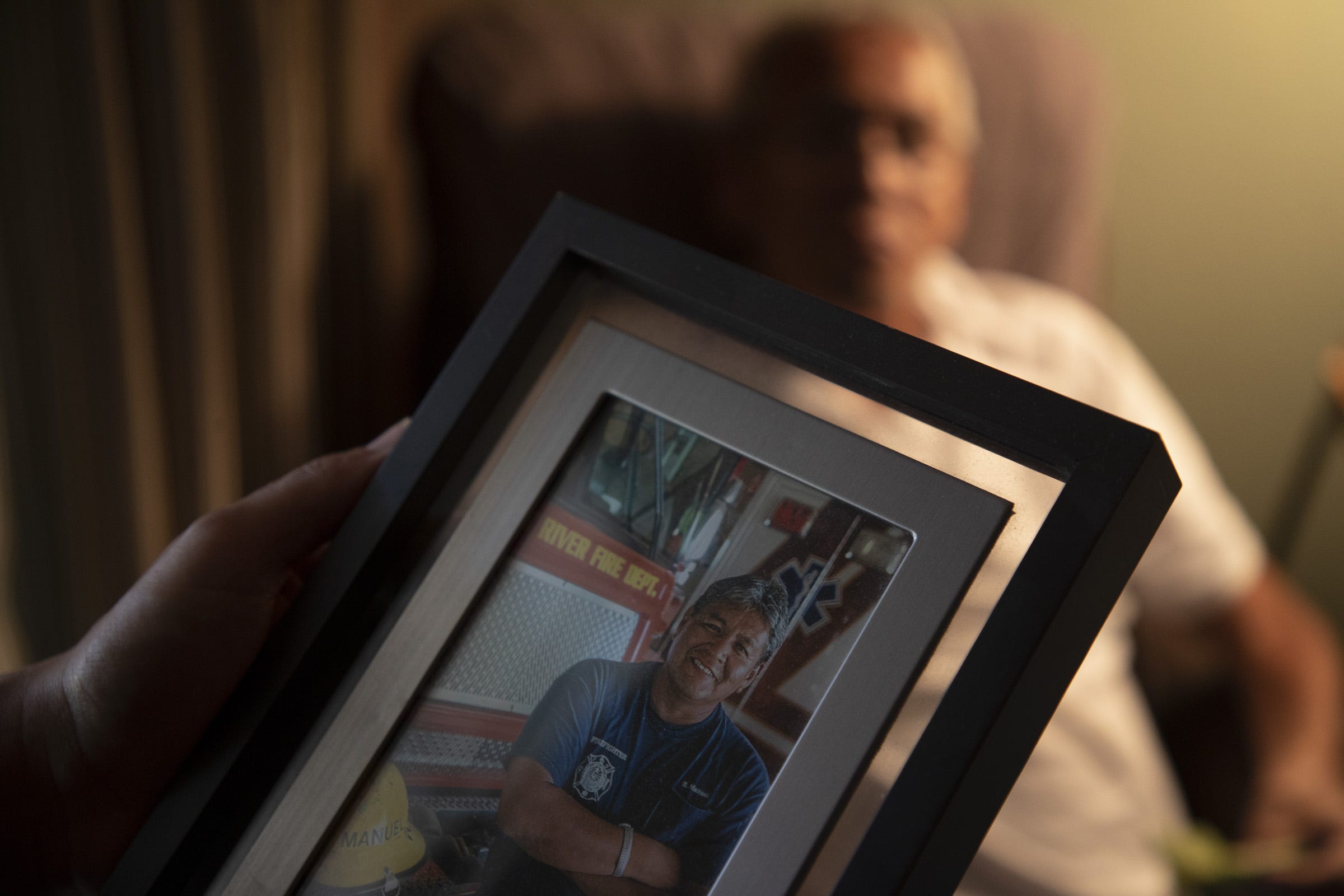
Manuel has spent a large portion of his life helping others because when he was 19, he saw a car hit a toddler. The shock of not knowing how to help pushed him to take CPR classes.
From there, Manuel became a first-aid instructor for the Red Cross, then the National Heart Association and the National Safety Council. He spent about two decades in that line of work before joining the Salt River Fire Department in 1987.
Manuel was in his mid-30s when he joined the Fire Department, but he prides himself on how he met all the physical demands of that job. He stayed with the department for 22 years.
“As time went on, I became more of a cultural keeper,” Manuel said.
Even though there are cultural programs offered within his community, Manuel said sometimes it gets bogged down by technicalities, saying only men can do this or only girls can hear that. Manuel said that’s not the way he grew up.
He said all the traditions he grew up with and the cultural teachings he learned came from his grandparents. He naturally went toward education as he got older and has made it a priority to share traditional and cultural teachings with young people.
Throughout his life, Manuel said he has put his community first, and when he got sick, the community let it be known how important he is.
Volunteers built a traditional roundhouse for him at his home, lining his front fence with willow staffs, each of them tied with ribbons put there by community members showing Manuel support.
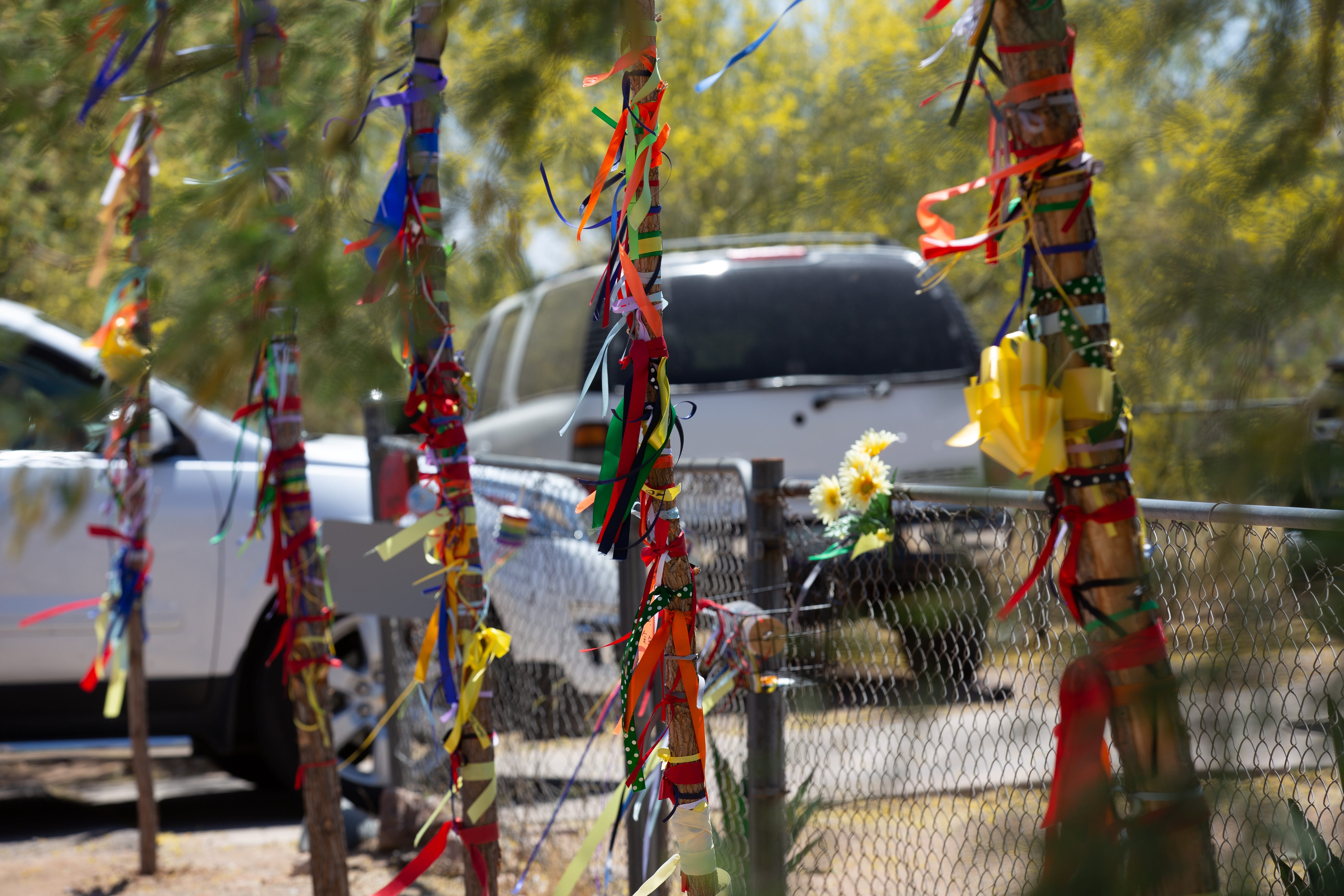
On June 21, a traditional Aw-AwThum walk was held to honor Manuel, as well as the earth, plants, the hands who created the Kia-ha and the women who carry the baskets.
An Aw-AwThum walk was a daily occurrence over 100 years ago and the event in June was the community’s way of revitalizing it.
The walk was led by tribal member Marissa Johnson and was set to commemorate the beauty of the Aw-AwThum heritage and the cultural lifestyle that have been lost due to colonization changes and modern practices.
Debbie Nez-Manuel said her husband has done a lot for his community and his family because whenever he had the chance to give, he chose to help.
“He’s a provider in a lot of different ways,” she added.
“When it comes to the community, he really upholds the principle of this community by maintaining their integrity of who they are,” she said of her husband. “I think that’s something that nobody really says out loud, is that integrity for their community is so important and they make very thoughtful and meaningful decisions to take care of the community.”
Their family is blended, by philosophy and family, Debbie Nez-Manuel said, because she is Navajo. In Salt River, they’re a patriarchal society; on the Navajo Nation, it’s matriarchal. She said that has played a role in their lives because they both have strong leadership capabilities.
“We naturally over time have respected one another,” she added. “Over time it has become a balance, a really beautiful balance.”
Reporter Shondiin Silversmith covers Indigenous people and communities in Arizona. Reach her at ssilversmi@arizonarepublic.com and follow her Twitter @DiinSilversmith.
Support local journalism. Subscribe to azcentral.com today.
